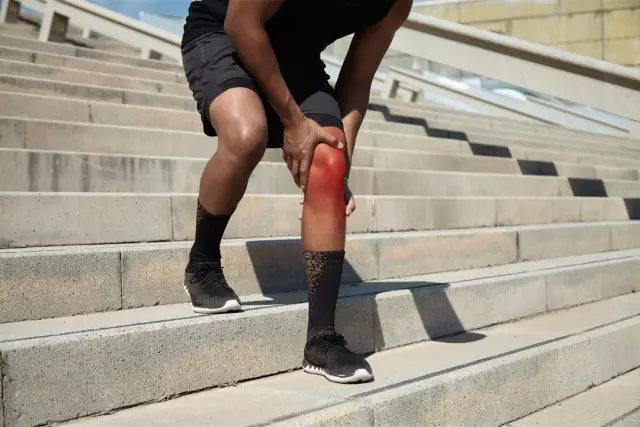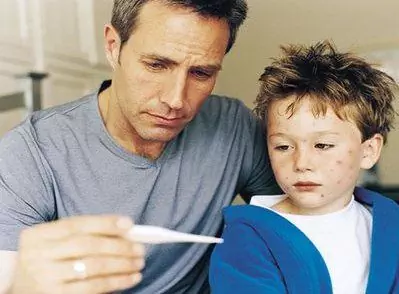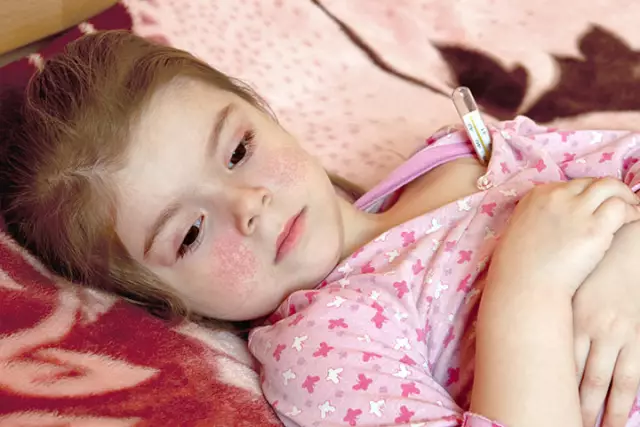- Author Rachel Wainwright [email protected].
- Public 2023-12-15 07:39.
- Last modified 2025-11-02 20:14.
Infectious arthritis
Infectious arthritis (pyogenic, septic arthritis) is a complex infectious disease of the joints, accompanied by fever, pain, chills, loss of mobility of the damaged joints, their swelling and damage.

The disease affects people of all ages, including infectious arthritis in children. In adults, the disease usually affects the knee joints or hands. In some patients, symptoms of the disease are observed in more than one joint. Infectious arthritis in children often causes polyarthritis and damage to the knee, shoulder and hip joints.
The high-risk group includes the following categories of people:
- with chronic rheumatoid arthritis;
- recently received intra-articular injections;
- have recently undergone joint surgery or injury;
- with some types of cancer;
- with a homosexual orientation (increased risk of gonorrheal arthritis);
- with systemic infections (HIV infection, gonorrhea);
- diabetics and patients with sickle cell anemia or systemic lupus erythematosus;
- with alcohol or drug addiction.
Causes of Infectious Arthritis
Mostly the causes of infectious arthritis are fungal, viral or bacterial infections that enter the joint along with the bloodstream. Also, the pathogen can get into the joint during surgery or in another way. The occurrence of a disease-causing factor depends on the patient's age. Infectious arthritis in newly born babies is usually caused by a gonococcal infection passed on to the baby from a mother with gonorrhea. Also, children can get sick as a result of various hospital procedures, including from an inserted catheter.
Staphylococcus aureus or haemophilius influencae acts as pathogens in children under 2 years of age. In older children and adult patients, streptococcus viridans and streptococcus pyogenes can also become pathogens. Typically, in sexually active people, infectious arthritis results from infection with Neisseria gonorrhoeae. Older people are infected by gram-negative bacteria such as Pseudomonas and Salmonella.
Symptoms of Infectious Arthritis
Predominantly pyogenic arthritis begins suddenly. Sometimes the symptoms of infectious arthritis build up over several weeks. This is accompanied by swelling of the damaged joint and an increase in its pain.
A symptom of infectious hip arthritis is pain in the groin area, which becomes very noticeable when walking. In most cases, the patient's body temperature rises, chills are felt. In children, infectious arthritis often causes nausea and vomiting.
Local symptoms of infectious arthritis are sharp soreness when moving, pain in the joint, changes in its contours, increasing swelling, impaired motor function of the limb, and an increase in body temperature.
Complications of Infectious Arthritis
The disease poses a direct threat not only to the health, but also to the patient's life, as it threatens with the destruction of bone cartilage or septic shock, which is predominantly fatal. So, Staphylococcus aureus can lead to very rapid destruction of cartilage, in just a couple of days. The destruction of the cartilage tissue leads to the displacement of the bone joints.

If the infection is bacterial, it can spread to surrounding tissues and blood, causing blood poisoning or abscesses. The most common complication of the disease is osteoarthritis.
Diagnosis of infectious arthritis
The doctor can make the correct diagnosis only after passing the appropriate laboratory tests, carefully studying the medical record and carefully examining the patient. When making a diagnosis, it should be borne in mind that symptoms of septic arthritis can also occur in other diseases (rheumatic fever, gout, borreliosis, etc.).
Sometimes the doctor refers the patient to an additional consultation with a rheumatologist and orthopedist in order to avoid an erroneous diagnosis.
To confirm the diagnosis, the doctor prescribes the following types of research:
- puncture of the joint for a detailed study of the synovial fluid;
- biopsy and culture of synovial tissue around the joint;
- cultures of urine and blood, as well as mucus from the cervix, etc.
In the early stages of septic arthritis, hardware diagnostics is not effective (the first 10-14 days after infection).
Treating Infectious Arthritis
As a rule, in case of infectious arthritis, the patient is treated for some time inpatiently, prescribing medications and physiotherapy sessions for him for several weeks or months.
If the disease is detected at a late stage and threatens with serious violations, then doctors immediately begin intravenous antibiotics. And after identifying the pathogen, the doctor prescribes adequate treatment for infectious arthritis.
For viral infections, anti-inflammatory nonsteroidal drugs are prescribed. The course of therapy with intravenous antibiotics is up to two weeks, after which the patient is prescribed a long course of oral antibiotics.
The entire period of inpatient treatment, the patient is under the vigilant supervision of doctors. The patient's synovial fluid is taken daily for analysis. This allows you to determine the effectiveness of the treatment. Since infectious arthritis is often accompanied by severe painful sensations, the patient is prescribed pain relievers. To protect the joints from accidental and sudden movements, a splint may be applied to the patient.
In some cases, surgery is used to treat infectious arthritis. It is used in relation to those patients for whom antibiotic therapy is not effective, or with serious lesions of the hip or other joints, from which it is problematic to take a puncture. Surgical treatment is also preferred in cases where infectious arthritis is caused by a penetrating or gunshot wound.
If the patient already has severe cartilage and bone damage, reconstructive surgery may be considered. However, the operation can be performed only when the infection has completely disappeared from the body.
After being discharged from the hospital, the patient is recommended to perform a special set of physical exercises that contribute to a faster recovery.
Prognosis of Infectious Arthritis
The favorable outcome of the disease largely depends on how quickly adequate treatment of infectious arthritis was initiated. It should be noted that in about 70% of cases, patients manage to avoid irreversible joint destruction, but many patients develop complications such as partial joint deformity and osteoarthritis. Children with septic arthritis of the hip joint often experience a violation of the bone growth zone. Respiratory failure and septic shock are the most common causes of death.
YouTube video related to the article:
The information is generalized and provided for informational purposes only. At the first sign of illness, see your doctor. Self-medication is hazardous to health!






